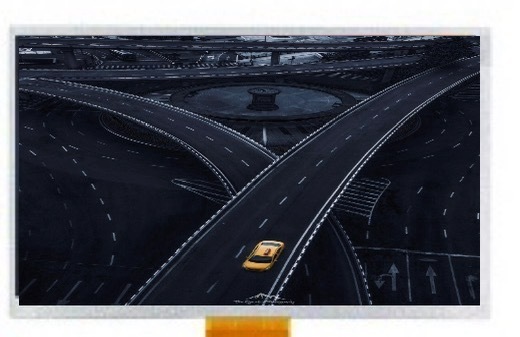Advancements in LCD Touch Display Technology Transform User Experience
Aug 04,2025
The Evolution and Innovation of LCD Touch Display Technology
In the realm of modern electronics, few innovations have had as profound an impact on daily life as the LCD touch display. Once considered a novelty in consumer electronics, these screens are now a fundamental component of everything from smartphones and tablets to cars, medical equipment, industrial systems, and home appliances. As user experience becomes increasingly central to product design, the LCD touch display continues to evolve—both in its underlying technology and in the ways it is used across industries.
The basic structure of an LCD touch display involves two core technologies: liquid crystal display (LCD) for rendering visual information and a touch-sensitive interface layered on top. The LCD itself operates by using liquid crystals that align in specific patterns when subjected to electric fields, modulating light to create images. This mechanism, coupled with a powerful backlight, allows the screen to render high-resolution visuals with precise color control. When integrated with capacitive or resistive touch technologies, it allows users to interact directly with the display surface using fingers or a stylus.
The early generations of LCD touch displays primarily used resistive technology, which responded to physical pressure. While affordable and durable, these displays had limitations in terms of responsiveness, multi-touch capabilities, and image clarity. Capacitive touch screens soon became the industry standard, especially in consumer devices. By detecting the electrical properties of the human body, capacitive screens provide faster, more accurate touch response and allow for multi-touch gestures like pinching and swiping. This shift significantly improved the way users interacted with digital devices and laid the foundation for today’s touchscreen-driven ecosystem.
As demands for clarity, efficiency, and responsiveness have grown, so too has the technology behind LCD displays. One key area of advancement is in resolution. Full HD, 2K, and even 4K LCD panels are now available on devices ranging from handheld electronics to large-format displays. These high-resolution screens offer crisper text, more vibrant images, and improved readability, even in bright environments. At the same time, improvements in in-plane switching (IPS) technology have enhanced viewing angles and color accuracy, making LCD touch displays more effective in collaborative or public settings.
Another significant innovation is the integration of low-power technologies. With growing awareness of energy consumption and sustainability, manufacturers are developing LCD touch screens that consume less power while maintaining high brightness and color quality. This is especially important for battery-powered devices like tablets and industrial handhelds, where energy efficiency directly impacts usability.
Durability and environmental resistance have also become critical factors, particularly for LCD touch displays used in harsh or demanding environments. Ruggedized displays with strengthened glass, water resistance, anti-glare coatings, and extended temperature range operation are now commonplace in automotive, marine, military, and factory automation systems. These features ensure that the displays continue to function reliably even under physical stress, direct sunlight, or exposure to moisture and chemicals.
In addition to hardware advancements, software integration has also played a key role in expanding the functionality of LCD touch screens. Modern operating systems and application interfaces are optimized for touch, offering responsive gestures, adaptive layouts, and customizable inputs that enhance usability. Touch screen controllers have become more sophisticated, capable of rejecting unintended touches, supporting stylus input, and providing haptic feedback for more intuitive control.
The future of LCD touch display technology is likely to involve further convergence with other innovations. One example is the integration of biometric sensors within the screen itself, enabling fingerprint recognition or even facial scanning without additional hardware. Another is the development of hybrid displays that combine LCD with emerging technologies like micro-LEDs or OLEDs, offering better contrast and thinner form factors. Foldable and flexible LCD panels, while still in their early stages, also hold promise for transforming how and where screens can be used.
Moreover, artificial intelligence and machine learning are beginning to influence touchscreen technology. AI-driven interfaces can adapt to user behavior, adjust display settings dynamically, and even predict user intentions to streamline interactions. In industrial and medical settings, where precision and speed are vital, this type of intelligent interface can reduce error rates and increase operational efficiency.
Despite competition from other display technologies like OLED and micro-LED, LCD touch displays continue to dominate many sectors due to their cost-effectiveness, maturity, and ongoing innovation. The ability to produce large volumes of high-quality panels at competitive prices makes LCD a practical choice for many manufacturers. At the same time, continuous investment in research and development ensures that LCD touch screens remain relevant and competitive.
In summary, the LCD touch display has evolved from a simple input/output device to a dynamic and adaptable platform central to modern human-computer interaction. Its impact spans countless applications and industries, and its future is filled with possibilities that will further integrate digital interfaces into every aspect of daily life. As touch interaction becomes more natural and seamless, the LCD display will continue to serve as a gateway between people and the digital world.
Key words:
Previous
Recommended
Advancements in LCD Touch Display Technology Transform User Experience





